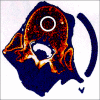Augmentation improves human cadaveric vertebral body compression mechanics for lumbar total disc replacement
- PMID: 20375770
- PMCID: PMC3413267
- DOI: 10.1097/BRS.0b013e3181cf7055
Augmentation improves human cadaveric vertebral body compression mechanics for lumbar total disc replacement
Abstract
Study design: Cadaveric biomechanical study.
Objective: To quantify the effects of vertebral body augmentation on biomechanics under axial compression by a total disc replacement (TDR) implant.
Summary of background data: TDR is a surgical alternative to lumbar spinal fusion to treat degenerative disc disease. Osteoporosis in the adjacent vertebrae to the interposed TDR may lead to implant subsidence or vertebral body fracture. Vertebral augmentation is used to treat osteoporotic compression fracture. This study sought to evaluate whether vertebral augmentation improves biomechanics under TDR axial loading.
Methods: Forty-five L1-L5 lumbar vertebral body segments with intact posterior elements were used. Peripheral quantitative computed tomography scans were performed to determine bone density, and specimens were block-randomized by bone density into augmentation and control groups. A semiconstrained keeled lumbar disc replacement device was implanted, providing 50% endplate coverage. Vertebral augmentation of 17.6% +/- 0.9% vertebral volume fill with Cortoss was performed on the augmentation group. All segments underwent axial compression at a rate of 0.2 mm/s to 6 mm.
Results: The load-displacement response for all specimens was nonlinear. Subfailure mechanical properties with augmentation were significantly different from control; in all cases, the augmented group was 2 times higher than control. At failure, the maximum load and stiffness with augmentation was not significantly different from control. The maximum apparent stress and modulus with augmentation were 2 times and 1.3 times greater than control, respectively. The subfailure stress and apparent modulus with augmentation were moderately correlated with bone density whereas the control subfailure properties were not. The augmented maximum stress was not correlated with bone density, whereas the control was weakly correlated. The maximum apparent modulus was moderately correlated with bone density for both the augmented and the control groups.
Conclusion: Augmentation improved the mechanical properties of the lumbar vertebral body for compression by a TDR implant.
Figures





Similar articles
-
A biomechanical investigation of vertebroplasty in osteoporotic compression fractures and in prophylactic vertebral reinforcement.Spine (Phila Pa 1976). 2007 Aug 1;32(17):E480-7. doi: 10.1097/BRS.0b013e31811ea2ee. Spine (Phila Pa 1976). 2007. PMID: 17762281
-
Biomechanical changes after the augmentation of experimental osteoporotic vertebral compression fractures in the cadaveric thoracic spine.Spine J. 2005 Jan-Feb;5(1):55-63. doi: 10.1016/j.spinee.2004.08.005. Spine J. 2005. PMID: 15653085
-
The Role of Vertebral Porosity and Implant Loading Mode on Bone-Tissue Stress in the Human Vertebral Body Following Lumbar Total Disc Arthroplasty.Spine (Phila Pa 1976). 2021 Oct 1;46(19):E1022-E1030. doi: 10.1097/BRS.0000000000004023. Spine (Phila Pa 1976). 2021. PMID: 33660678
-
Long-term effects of vertebroplasty: adjacent vertebral fractures.J Long Term Eff Med Implants. 2006;16(4):265-80. doi: 10.1615/jlongtermeffmedimplants.v16.i4.10. J Long Term Eff Med Implants. 2006. PMID: 17073569 Review.
-
Chondrosis of the disc - risk factor for osteoporotic vertebral fractures (biomechanical analysis).Wien Med Wochenschr. 2010 Sep;160(17-18):464-9. doi: 10.1007/s10354-010-0823-0. Epub 2010 Aug 24. Wien Med Wochenschr. 2010. PMID: 20737224 Review.
Cited by
-
We Need to Talk about Lumbar Total Disc Replacement.Int J Spine Surg. 2018 Aug 3;12(2):201-240. doi: 10.14444/5029. eCollection 2018 Apr. Int J Spine Surg. 2018. PMID: 30276080 Free PMC article.
-
Microscopic and Biomechanical Analysis of PEEK Interspinous Spacers for Spinal Fusion Applications.Materials (Basel). 2025 Feb 4;18(3):679. doi: 10.3390/ma18030679. Materials (Basel). 2025. PMID: 39942345 Free PMC article.
References
-
- Zigler JE. Lumbar spine arthroplasty using the ProDisc II. Spine J. 2004;4:260S–7S. - PubMed
-
- David T. Long-term results of one-level lumbar arthroplasty: minimum 10-year follow-up of the CHARITE artificial disc in 106 patients. Spine. 2007;32:661–6. - PubMed
-
- Lemaire JP, Carrier H, Sariali el H, et al. Clinical and radiological outcomes with the Charite artificial disc: a 10-year minimum follow-up. J Spinal Disord Tech. 2005;18:353–9. - PubMed
-
- Tropiano P, Huang RC, Girardi FP, et al. Lumbar total disc replacement. Seven to eleven-year follow-up. J Bone Joint Surg Am. 2005;87:490–6. - PubMed
-
- Ploeg WT, Veldhuizen AG, The B, et al. Percutaneous vertebroplasty as a treatment for osteoporotic vertebral compression fractures: a systematic review. Eur Spine J. 2006;15:1749–58. - PubMed
Publication types
MeSH terms
Grants and funding
LinkOut - more resources
Full Text Sources
Research Materials

